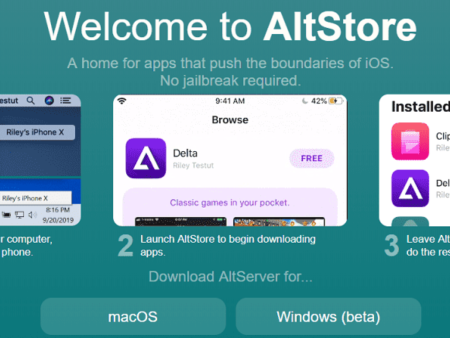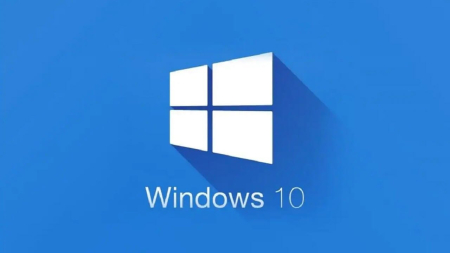The Benefits of Programmatic Mobile Advertising and How to Implement It
-
22/02/2023
-
959
-
0
Programmatic mobile advertising offers numerous benefits for advertisers, including greater efficiency, improved targeting, and increased ROI. In this article, we will explore these benefits and provide tips on implementing programmatic mobile advertising strategies.
Related posts
The best 3D games on App Store and Google Play 2023
The best dating app 2023, all about dating apps you need to know
1. Programmatic Mobile Advertising: An Overview
Programmatic mobile advertising refers to the use of technology and data to automate the buying and selling of mobile ad inventory. It involves the use of algorithms and artificial intelligence (AI) to target the right audience at the right time and with the right message, all in real time.
One of the primary benefits of programmatic mobile advertise is that it enables advertisers to reach their target audience more effectively. By leveraging data and AI; advertisers can identify and target consumers based on their interests, behaviors, and demographics. This ensures that the ads are shown to the most relevant audience, which increases the chances of conversion.
Programmatic mobile advertise also offers greater transparency and control over ad campaigns. Advertisers have access to real-time data that allows them to monitor and optimize their campaigns in real time. This means that they can quickly adjust their targeting, messaging, and budget to ensure that they are getting the best possible results.
 Programmatic Mobile Advertising: An Overview, Source: asoservice.com
Programmatic Mobile Advertising: An Overview, Source: asoservice.com
Another advantage of programmatic mobile advertising is its scalability. Advertisers can easily scale their campaigns up or down depending on their budget and goals. They can also easily test different ad creatives, targeting options, and messaging to see what works best.
Implementing programmatic mobile advertising requires a few key steps. First, advertisers need to define their target audience and the goals of their campaign. They also need to select the right ad format and creatives and choose the right ad exchange; or demand-side platform (DSP) to reach their target audience. Finally, they need to track and analyze the performance of their campaign and make adjustments as needed.
Overall, programmatic mobile advertising offers numerous benefits for advertisers looking to reach their target audience more effectively, increase their return on investment (ROI), and achieve their marketing goals. By leveraging the latest technology and data, advertisers can create highly targeted, effective ad campaigns that deliver real results. You can see Microsoft store app reviews for more information.
2. Benefits of Programmatic Mobile Advertising
Programmatic mobile advertising has several benefits, including:
Increased efficiency and effectiveness: Programmatic advertising uses algorithms and automation to optimize ad placements, targeting, and bidding, resulting in more efficient and effective campaigns.
Improved targeting and personalization: With programmatic advertising, advertisers can use real-time data to target audiences based on demographics; interests, behaviors, and more, resulting in more relevant and personalized ads.
Enhanced transparency: Programmatic advertising provides advertisers with greater visibility into where their ads are being placed, how they are performing, and what they are paying for.
Cost-effectiveness: Programmatic advertising allows for real-time bidding, which means advertisers can bid on ad inventory in real time, resulting in more cost-effective campaigns.
Better ad placement: With programmatic advertising, advertisers can use data to identify the best ad placements for their target audience, resulting in higher engagement and conversion rates.
Time savings: Programmatic advertising automates many of the manual tasks involved in ad buying, resulting in time savings for advertisers and more efficient campaign management.
3. Types of Programmatic Mobile Advertise
Programmatic mobile advertising can be divided into various types, each with its unique features and benefits. Here are some of the most common types of programmatic mobile advertising:
Real-time bidding (RTB): In RTB, advertisers bid on ad impressions in real time, and the highest bidder wins the ad space. This type of programmatic advertising enables advertisers to optimize their ad campaigns and target the right audience.
Private marketplace (PMP): PMP is an invitation-only auction in which publishers offer their ad inventory to a select group of advertisers. This type of programmatic advertising provides more control over ad placements and allows advertisers to target a specific audience.
Programmatic guaranteed (PG): In PG, advertisers buy ad inventory directly from publishers at a fixed price. This type of programmatic advertising ensures ad placements on premium inventory, and advertisers can reach their target audience effectively.
Automated guaranteed (AG): AG is similar to PG, but the buying process is automated. Advertisers can purchase premium ad inventory directly from publishers through a programmatic platform.
Dynamic creative optimization (DCO): DCO allows advertisers to create personalized ads that are tailored to a specific audience. Advertisers can use real-time data to optimize the ad content, such as images, text, and call-to-action (CTA) buttons.
These types of programmatic mobile advertising offer advertisers a range of options to reach their target audience effectively and optimize their ad campaigns. By choosing the right type of programmatic advertising and leveraging data-driven insights; advertisers can achieve their marketing goals and maximize their return on investment (ROI).
4. Implementing Programmatic Mobile Advertising
Implementing programmatic mobile advertising involves several steps and considerations to ensure a successful campaign. Here are some key steps to follow:
Define your target audience: Before starting any advertising campaign, you need to identify your target audience. This involves analyzing your customer demographics, preferences, and behaviors.
Select the right programmatic platform: Once you have identified your target audience, the next step is to choose the right programmatic platform that best aligns with your advertising goals. Some popular programmatic platforms for mobile advertising include Google Reviews, Facebook Ads, and Twitter Ads.
Set your budget: Programmatic advertising campaigns can be expensive; so it’s important to set a budget that aligns with your advertising goals. You should also consider the cost-per-click (CPC), cost-per-impression (CPM), and cost-per-acquisition (CPA) when setting your budget.
Develop engaging ad creatives: Ad creatives play a critical role in the success of programmatic mobile advertising campaigns. Ensure that your ad creative is visually appealing; clear, and concise and that it resonates with your target audience.
Monitor and optimize your campaigns: Once your programmatic mobile advertise campaign is live, it’s important to monitor its performance regularly. You can use analytics and performance metrics to track key performance indicators (KPIs) such as click-through rates (CTR); conversion rates, and return on investment (ROI). Based on these metrics, you can optimize your campaign by adjusting your targeting, bidding strategy, or ad creatives.
By following these steps and considerations, you can implement a successful programmatic mobile advertising campaign that drives results and maximizes your ROI.
5. Best Practices for Programmatic Mobile Advertising
Here are some best practices for these:
Understand Your Target Audience: One of the most important factors for programmatic mobile advertising is understanding your target audience. By knowing their interests and demographics; you can create effective ad campaigns that resonate with them.
Use Quality Data: Make sure you are using quality data to target your ads. The more accurate your data, the better your targeting will be, leading to higher engagement and conversions.
Optimize Your Ads: Always optimize your ads for the best performance. Test different ad formats, creatives, and placements to see what works best for your campaign.
Monitor Your Campaigns: Keep a close eye on your campaigns to track their performance and make necessary adjustments. Regularly review your ad data to identify areas for improvement.
Choose the Right Platform: Choose a programmatic mobile advertising platform that fits your needs and provides the features you require to reach your target audience.
Focus on Brand Safety: Programmatic mobile advertise can sometimes lead to ads being placed in undesirable locations. Make sure to focus on brand safety by working with a reputable platform; and ensuring your ads are placed in appropriate environments.
By following these best practices, you can maximize the benefits of programmatic mobile advertising and drive better results for your campaigns. You can buy app downloads from real users.
6. Future of Programmatic Mobile Advertising
Programmatic mobile advertise is a rapidly growing industry, with an expected global spend of $98 billion by 2023. The future of programmatic mobile advertising is bright, as more and more businesses are recognizing the benefits of this advertising method.
One major trend in the future of programmatic mobile advertising is the use of artificial intelligence (AI) and machine learning. These technologies can analyze large amounts of data in real-time, allowing advertisers to optimize their campaigns more efficiently and effectively. AI can also help to personalize ads based on user behavior and preferences, resulting in higher engagement and conversion rates.
Another trend is the increased use of programmatic advertise on connected TV and streaming platforms. As more consumers cut the cord and move away from traditional cable TV, advertisers are turning to programmatic advertising to reach these audiences. Programmatic advertising on these platforms allows for highly targeted and relevant ads, resulting in better user experiences and higher engagement rates.
Finally, programmatic mobile advertising is becoming increasingly transparent, with more emphasis on data privacy and user consent. Advertisers are working to ensure that their campaigns are compliant with data privacy laws and are being transparent about the data they collect and how it is used. This increased transparency and focus on user privacy is expected to continue in the future of programmatic mobile advertising.
In summary, the future of programmatic mobile advertise is bright, with the continued use of AI and machine learning, the expansion of programmatic advertising on connected TV and streaming platforms, and an increased focus on data privacy and transparency. Advertisers who embrace these trends and stay ahead of the curve are likely to see continued success with programmatic mobile advertise in the years to come.
Conclusion
In conclusion, programmatic mobile advertise offers many benefits to advertisers, such as efficiency, targeting, and cost-effectiveness. Implementing it requires careful planning and execution, but the results can be highly effective for reaching and engaging mobile audiences.
Related posts
https://asoservice.com/keyword-app-installs
https://asoservice.com/increase-app-installs-from-google-ads
Thanks so much for reading this article.
Source: https://asoservice.com/




































Leave a Reply
Your e-mail address will not be published. Required fields are marked *